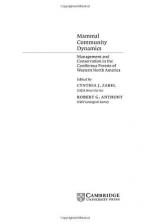|
This section contains 2,838 words (approx. 10 pages at 300 words per page) |

|
Most forests contain a mixture of trees, and coniferous forests are no different. Stands of deciduous (dee-SID-joo-uhs) trees, such as larches, birches, and poplars, may exist within their boundaries. (Deciduous trees lose their leaves at the end of each growing season.) For more complete information on these kinds of trees, see the chapters titled "Deciduous Forest" and "Rain Forest."
These mixed trees and smaller plants grow to different heights, forming "layers" in the forest. The tallest trees create a canopy, or roof, over the rest. In the coniferous forest, these trees are often spruces and firs. Beneath the canopy grows the understory, a layer of shorter, shade-tolerant trees, such as the Pacific dogwoods of California. The next layer, only a few feet off the ground, is composed of small shrubs, such as junipers, blueberry, witch-hobble, and mountain laurel. Growing close to the ground are wild flowers...
|
This section contains 2,838 words (approx. 10 pages at 300 words per page) |

|




